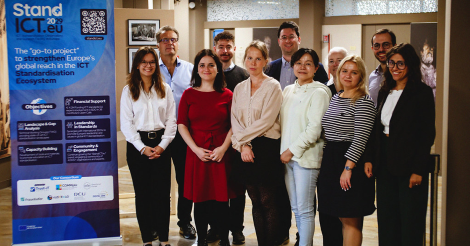Read time: 3 mins
On the 16th December 2020, the Commission and the High Representative of the Union for Foreign Affairs and Security Policy are presenting a new EU Cybersecurity Strategy. As a key component of Shaping Europe's Digital Future, the Recovery Plan for Europe and the EU Security Union Strategy, the Strategy will bolster Europe's collective resilience against cyber threats and help to ensure that all citizens and businesses can fully benefit from trustworthy and reliable services and digital tools. Whether it is the connected devices, the electricity grid, or the banks, planes, public administrations and hospitals Europeans use or frequent, they deserve to do so with the assurance that they will be shielded from cyber threats.
The new Cybersecurity Strategy also allows the EU to step up leadership on international norms and standards in cyberspace, and to strengthen cooperation with partners around the world to promote a global, open, stable and secure cyberspace, grounded in the rule of law, human rights, fundamental freedoms and democratic values.
Furthermore, the Commission is making proposals to address both cyber and physical resilience of critical entities and networks: a Directive on measures for high common level of cybersecurity across the Union (revised NIS Directive or ‘NIS 2'), and a new Directive on the resilience of critical entities. They cover a wide range of sectors and aim to address current and future online and offline risks, from cyberattacks to crime or natural disasters, in a coherent and complementary way.
Trust and security at the heart of the EU Digital Decade
The new Cybersecurity Strategy aims to safeguard a global and open Internet, while at the same time offering safeguards, not only to ensure security but also to protect European values and the fundamental rights of everyone. Building upon the achievements of the past months and years, it contains concrete proposals for regulatory, investment and policy initiatives, in three areas of EU action:
- Resilience, technological sovereignty and leadership
Under this strand of action the Commission proposes to reform the rules on the security of network and information systems, under a Directive on measures for high common level of cybersecurity across the Union (revised NIS Directive or ‘NIS 2'), in order to increase the level of cyber resilience of critical public and private sectors: hospitals, energy grids, railways, but also data centres, public administrations, research labs and manufacturing of critical medical devices and medicines, as well as other critical infrastructure and services, must remain impermeable, in an increasingly fast-moving and complex threat environment.
The Commission also proposes to launch a network of Security Operations Centres across the EU, powered by artificial intelligence (AI), which will constitute a real ‘cybersecurity shield' for the EU, able to detect signs of a cyberattack early enough and to enable proactive action, before damage occurs. Additional measures will include dedicated support to small and medium-sized businesses (SMEs), under the Digital Innovation Hubs, as well as increased efforts to upskill the workforce, attract and retain the best cybersecurity talent and invest in research and innovation that is open, competitive and based on excellence.
- Building operational capacity to prevent, deter and respond
The Commission is preparing, through a progressive and inclusive process with the Member States, a new Joint Cyber Unit, to strengthen cooperation between EU bodies and Member State authorities responsible for preventing, deterring and responding to cyber-attacks, including civilian, law enforcement, diplomatic and cyber defence communities. The High Representative puts forward proposals to strengthen the EU Cyber Diplomacy Toolbox to prevent, discourage, deter and respond effectively against malicious cyber activities, notably those affecting our critical infrastructure, supply chains, democratic institutions and processes. The EU will also aim to further enhance cyber defence cooperation and develop state-of-the-art cyber defence capabilities, building on the work of the European Defence Agency and encouraging Member States to make full use of the Permanent Structured Cooperation and the European Defence Fund.



